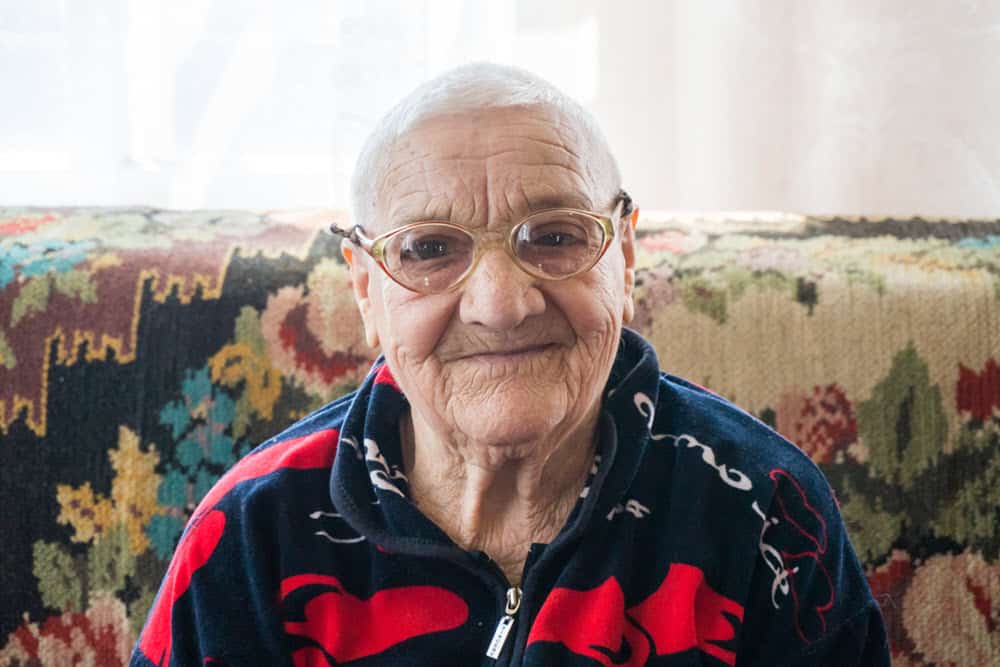Understanding Amblyopia and How it Changes as You Age
Amblyopia, also known as lazy eye, is an eye condition that can affect your vision if not treated in a timely manner.
Definition and Types
Amblyopia is a vision disorder where visual acuity in one eye does not develop correctly during childhood resulting in a misaligned eye. The brain favors one eye over the other, leading to impaired vision in the affected eye.
This vision problem can manifest itself in many different ways, including:
- Strabismic Amblyopia: Eye misalignment causes the brain to ignore signals from the turned eye.
- Deprivation Amblyopia: Cataracts or similar conditions block light from entering an eye.
- Refractive Amblyopia: Unequal refractive errors in both eyes make one eye weaker.
Causes of Amblyopia
The leading causes of amblyopia relate to how the eyes send images to the brain.
Major factors resulting in the characteristic eye turn include:
- Uneven focus between your eyes
- Misalignment in your eyes
- Blockage in one eye, such as a cataract
For children, early detection and treatment are crucial to prevent long-term issues.
Symptoms and Diagnosis
You may notice symptoms such as:
- Eyes that do not seem to work together
- Depth perception troubles
- Eye squinting or shutting
Ideally, overall eye health should be a priority starting at a very early age. Regular eye care, including Children’s eye exams are essential for early eye disease diagnosis and treatment. At our office, Dr. Knapp will diagnose amblyopia by conducting a comprehensive eye exam , including vision screenings and assessing how your eyes focus, move, and work together.
Detecting the signs early drastically improves the chances for successful treatment.
Amblyopia and Aging
The question on the minds of many is: does lazy eye get worse with age? In fact, amblyopia may have a negative effect on your vision over time.

Amblyopia may have a negative effect on your vision over time
Effects on Vision Over Time
Your vision could change as you grow older, even with amblyopia.
Over time, you might notice a gradual decrease in visual acuity. This means detail in your vision becomes harder to see.
Aging also brings a natural decline in your eyes’ lens flexibility, which can affect your lifelong vision.
In cases of amblyopia, you may find that poor depth perception (among other vision issues) is another challenge you face, making navigation and spatial judgment more difficult.
Risk Factors for Progression
Certain factors might increase the chance of your amblyopia progressing with age:
- Not receiving treatment in childhood
- One-sided visual stress due to work or daily activities
- Health conditions that affect the eyes, like diabetes or cataracts
It is crucial to understand that you can still receive effective treatment for amblyopia regardless of age. While treatment is generally most effective among the young, older adults may still undergo treatment and improve their overall vision.
Preventing your lazy eye from getting worse requires a visit to your local eye doctor for an exam. If you’re in the NJ/NYC metro area, our optometry office in Fair Lawn, NJ can help.
Treatment Strategies
Effective management of amblyopia involves a range of treatment strategies to improve visual acuity and ocular alignment.
Early Intervention
You reap the most benefit from amblyopia treatment when it begins in early childhood.
Regular vision screenings help detect amblyopia when your brain’s responsiveness to treatment remains high.
Early detection can lead to interventions that may prevent vision loss.
That said, early intervention isn’t always an option for older adults. The good news is that there are still treatments available.
Corrective Approaches
Glasses or Contact Lenses: You may need these to address refractive errors such as nearsightedness or farsightedness, which can contribute to amblyopia.
Patching Therapy: An effective amblyopia treatment involves wearing an eye patch over the stronger eye.
This method encourages use of the weaker eye, which can lead to visual acuity improvement.
Eye Drops: Atropine eye drops blur vision in the stronger eye to stimulate the weaker one.
Surgical Options
Treatment with vision therapy is usually implemented before invasive eye surgery. Vision therapy can be quite effective at treating lazy eye and oftentimes makes surgery unnecessary. In rare instances, surgery may be considered. Especially if amblyopia stems from physical obstructions within the eye.
Procedures correct structures that impede vision and contribute to amblyopia. Your doctor will discuss whether you’re a candidate for surgery based on your specific condition.
Complications and Co-Existing Conditions
Amblyopia can lead to several complications such as poorer visual acuity and may co-exist with other conditions that influence eye health.
Strabismus and Squinting
If you have amblyopia, you might also experience strabismus where your eyes don’t align properly. Typically,one eye is turned either in towards the nose or outward towards the outside of the face – while the other eye is focused forward.
Strabismus can further impair your vision and potentially exacerbate amblyopia if not addressed promptly.
Cataracts and Other Eye Disorders
Amblyopia often exists alongside eye disorders like cataracts—clouding in the lens of your eye—which can prevent clear images from reaching your retina.
As a result, such obstructions might worsen the effects of lazy eye, especially if these occur during childhood when your eyes are still developing.
Refractive Errors
You may experience a refractive error such as farsightedness , nearsightedness , and astigmatism if you have amblyopia.
Anisometropic amblyopia, a specific kind where there is a different prescription in each eye, can cause a significant discrepancy affecting how your eyes work together.
It is crucial to correct these errors to improve visual acuity and prevent the progression of amblyopia.
Prevention and Maintenance

Even older adults can take steps to prevent amblyopia from getting worse
To shield your vision from amblyopia or prevent its progression, adopt early screening practices and maintain good visual habits.
Regular Vision Screening
Vision screening remains a critical step in preventing amblyopia.
You should schedule your child’s first comprehensive pediatric eye exam when your child is very young. The American Optometric Association recommends that children come in for a screening as young as six months – even if they don’t appear to have any obvious vision problems.
Early detection of conditions like strabismus, refractive errors, and family history of eye problems plays a vital role in prompt intervention.
Experts recommend regular vision checks to catch any changes as soon as they occur.
Lifestyle and Visual Hygiene
Proper visual hygiene involves protecting and enhancing your eye health through daily practices.
This includes limiting screen time, ensuring adequate lighting while reading or working, and using appropriate lenses if prescribed.
Incorporating a variety of visual stimuli in your environment can help stimulate your eyes and support overall visual development.
If you use contact lenses, maintain them as advised to avoid any infections or complications that might affect your vision.
Recent Advances in Amblyopia Research
Recent research has led to significant developments in amblyopia treatment, with technological innovations and an enhanced understanding of neuroplasticity at the forefront.
Technological Innovations
Recent studies highlight the role of technology in amblyopia therapy.
Vision therapy now often includes the use of virtual reality for Amblyopia treatment – including games and apps that engage both eyes, promoting visual cooperation.
The Pediatric Eye Disease Investigator Group has tested these techniques, showing potential for more effective treatment outcomes.
Understanding Neuroplasticity
Researchers now focus on synaptic plasticity within the visual cortex to comprehend amblyopia’s complex nature better.
The discovery that neuroplastic changes can occur beyond early childhood suggests that treatment may be effective even at a later age.
Frequently Asked Questions
In this section, find answers to common concerns about amblyopia, also known as lazy eye, and its treatment options as you age.
Can adults undergo treatment for amblyopia?
Yes, despite past beliefs, recent research indicates that treatment for amblyopia can be successful for adults.
What are the surgical options for correcting amblyopia?
Surgery might correct the physical conditions contributing to amblyopia, such as straightening the eyes for those with strabismus, but it does not cure amblyopia alone.
Is there a genetic component to amblyopia?
Genes can play a role, and you may have a higher risk of lazy eye if close family members have had it or other serious eye conditions.
At what age does lazy eye treatment become less effective?
Treatment is most effective at a young age, however most older patients can achieve at least some improvement well past the early childhood years.
How can I test for lazy eye at home?
Look for signs such as one eye wandering, eyes not working in tandem, or if your child squints or shuts an eye. Testing at home however has severe limitations. Come in to our Fair Lawn, NJ optometry office (or to your local optometrist) for a comprehensive eye exam in order to get a proper diagnosis.
What are the underlying causes of amblyopia?
Amblyopia occurs due to disrupted visual development. This can arise from a significant difference in prescription between eyes, strabismus, or any factor that obstructs clear vision during childhood.
